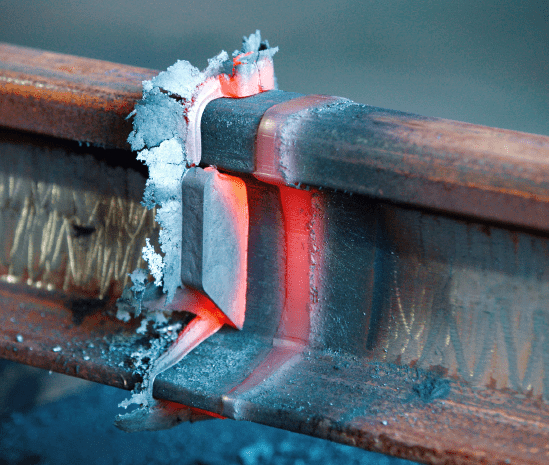Why a Welding WPS is Crucial: Enhancing Consistency and Conformity
Why a Welding WPS is Crucial: Enhancing Consistency and Conformity
Blog Article
Achieving Welding Quality: Unveiling the Keys of WPS Implementation and Optimization
In the world of welding, attaining excellence is a quest that hinges on the thorough application and optimization of Welding Procedure Specifications (WPS) These foundational papers work as the backbone of welding operations, determining the procedures and specifications needed for generating high-quality welds constantly. However, the tricks to opening the full capacity of WPS exist not just in recognizing its value yet likewise in understanding the intricacies of its implementation and optimization. By delving into the crucial elements, techniques, obstacles, and ideal techniques related to WPS, a globe of welding quality awaits those who are willing to explore its midsts.
Relevance of WPS in Welding
The Significance of Welding Treatment Specs (WPS) in the welding market can not be overstated, working as the foundation for guaranteeing uniformity, top quality, and safety and security in welding procedures. A WPS offers detailed directions on exactly how welding is to be lugged out, including necessary variables such as products, welding processes, joint design, filler metals, preheat and interpass temperatures, welding currents, voltages, travel rates, and much more. By adhering to a well-defined WPS, welders can maintain harmony in their job, bring about constant weld high quality throughout various jobs.

Crucial Element of WPS
Discussing the indispensable components of a welding treatment spec (WPS) is important for recognizing its role in welding operations. A detailed WPS consists of numerous crucial components that direct welders in achieving top quality and uniformity in their work. One important facet of a WPS is the welding procedure specification, which lays out the specific welding processes to be utilized, such as gas tungsten arc welding (GTAW) or secured steel arc welding (SMAW) Additionally, the WPS consists of details on the welding materials, such as the type and specs of the base steel and filler steel to be used. The WPS also specifies essential variables like welding parameters, preheat and interpass temperature demands, and post-weld warm treatment procedures. In addition, it consists of information on joint design, fit-up, and any type of special strategies or preventative measures needed for the welding procedure. By integrating these crucial elements right into the WPS, welding procedures can be standard, ensuring quality, effectiveness, and security in welding operations.
Strategies for WPS Optimization

Second of click now all, training and qualification of welding workers according to the specific demands of the WPS is extremely important. Supplying comprehensive training programs and guaranteeing that welders are licensed to carry out treatments described in the WPS can cause better welds and lowered rework.
Additionally, leveraging modern technology such as welding software and tracking systems can assist in optimizing WPS. These tools can aid in tracking variables, making sure parameters are within specified limitations, and supplying real-time comments to welders, allowing them to make instant adjustments for enhanced weld top quality.
Typical Obstacles and Solutions
Encountering challenges in carrying out the techniques for WPS optimization can hinder welding procedures' performance and top quality. One usual challenge is poor training or understanding of the welding treatment requirements (WPS) among the welding group.
One more difficulty is the lack of proper documents and record-keeping, which is vital for WPS optimization. Without clear documents of welding parameters, materials made use of, and inspection outcomes, it comes to be challenging to identify areas for enhancement and guarantee uniformity in welding processes. Carrying out a robust documentation system, such as digital welding administration software application, can assist streamline record-keeping and facilitate information analysis for continuous improvement.
In addition, inconsistent welding devices calibration and upkeep can posture a significant difficulty to WPS optimization. Regular tools checks, calibration, and upkeep timetables need click here to find out more to be followed strictly to make certain that welding criteria are properly regulated and maintained within the defined resistances (welding WPS). By resolving these usual obstacles with proactive options, welding operations can boost performance, top quality, and overall welding excellence
Ideal Practices for WPS Implementation
To make sure effective WPS execution in welding procedures, adherence to market standards and careful focus to detail are extremely important. When starting WPS application, it is crucial to start by thoroughly comprehending the particular welding requirements of the job. This entails an extensive testimonial of the welding procedure specifications, materials to be welded, and the ecological problems in which the welding will happen.
When the requirements are clear, the next action is to select the suitable welding treatment that aligns with these specs. This entails speaking with the appropriate codes and requirements, such as those given by the American Welding Society (AWS) or the International Company for Standardization (ISO), to guarantee compliance and high quality.
Furthermore, documenting the whole WPS execution procedure is necessary for traceability and quality assurance. Comprehensive documents need to be kept pertaining to welding parameters, material preparation, interpass and preheat temperatures, welding consumables made use of, and any type of variances from the initial treatment. Normal audits and evaluations of the WPS can assist recognize locations for enhancement and make sure recurring optimization of the welding process.


Final Thought
To conclude, the implementation and optimization of Welding Procedure Requirements (WPS) is vital for achieving welding quality. By comprehending the crucial elements of WPS, executing effective strategies for optimization, resolving typical difficulties, and complying with finest methods, welders can guarantee premium welds and secure working conditions. It is necessary for specialists in the welding industry to focus on the appropriate application of WPS to boost total welding efficiency and accomplish desired results.
The Significance of Welding Treatment Specs (WPS) in the welding market can not be overemphasized, offering as the backbone for guaranteeing consistency, quality, and security in welding operations. A WPS provides thorough directions on exactly how welding is to be lugged out, including vital variables such as products, welding procedures, joint style, filler metals, preheat and interpass temperatures, welding currents, voltages, travel rates, and much more. One important element of a WPS is the welding procedure spec, which describes the certain welding procedures to be made use of, such as gas tungsten arc welding see (GTAW) or secured steel arc welding (SMAW) By incorporating these key components into the WPS, welding procedures can be standard, ensuring quality, performance, and safety in welding procedures.
It is crucial for professionals in the welding market to prioritize the appropriate application of WPS to boost general welding performance and accomplish desired end results.
Report this page